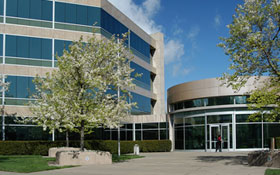
Green builders can look for support from the insurance industry as coverage options evolve to support green building techniques.
Fireman’s Fund Insurance Co., an early innovator of providing coverage in this area back in 2006, and has green building policy counts of around 1,800, according to a company official. The company recently upgraded and improved its coverage and also plans to pursue green educational facilities with a bit more gusto.
“We were the first company to develop green building coverage,” says Stephen Bushnell, senior director of emerging industries. “As time has gone along, we have upgraded our form and improved the coverage, launching changes just this last July.”
That said, the company is not without its competitors: Green coverage has become an industry standard over the past couple of years, with insurers such as Lexington Insurance Co. (a subsidiary of AIG), ACE USA, Travelers, Liberty Mutual and FM Global.
“It has gotten to the point now where even the insurance service office, which is an industry organization that develops coverage forms for the industry, has created their own green insurance coverage,” Bushnell says.
“We have launched and marketed an insurance product that is specifically designed to cover the unique exposures of green buildings,” says Bushnell.
“These exposures include things like green or vegetative roofs, which may not be properly covered under typical policies. Most policies limit the amount of insurance that is provided for vegetation, whether it is on the roof, surrounding the building, or in the parking lot. Usually the limitation is $25,000, which is not going to be enough [for a rooftop installation]. Fireman’s Fund’s policy can provide full coverage for all of the vegetation on those roofs.”
Typical property insurance coverage also does not cover underground property other than a building’s foundation, and therefore does not address the needs of green buildings that may have underground alternative energy equipment or underground systems to capture rainwater, Bushnell explained.
“We’ve extended our coverage to make sure we are covering underground equipment that is related to alternative energy systems and alternative water systems,” he says.
Owners of green buildings may also encounter difficulty with mainstay coverages because insurance contracts generally are specified to cover property within 100 feet of the described building. This issue comes into play for risks such as wineries, which often utilize equipment such as solar panels or wind turbines located in fields away from the main structure. Bushnell says it’s a non-issue with the right green coverage.
“We’ve extended our coverage to cover up to 1,000 feet away,” he says. “By extending that definition of how far away from the building it will cover, we are automatically covering that alternative energy equipment that is a little bit more remote.”
One way Fireman’s Fund competes with the growing competition is by expanding its underwriting appetite, meaning the areas where the firm is willing to write business. Hot on the insurers appetite for coverage is the educational building market, which the company began pursuing in August, Bushnell says.
“We had been in that market, but not in a big way,” he says. “We believe that our green coverage offerings can help us grow our market share for school significantly.
The insurer is also stepping up to lead by example, having retrofitted its Novato, Calif., headquarters last year to achieve LEED existing building certification. The headquarters received and Energy Star certification with a score of 92, and the company is committed to reducing its carbon emissions by 25 percent by 2012.
Lower Risk Mitigates Cost
“We’ve looked hard at green buildings and we’ve looked hard at a lot of the ways that green buildings are built,” Bushnell says. “What goes into making a building green and what impact does that have on the physical risk that the building presents?”
Fireman’s Fund determined that green buildings should present less risk of fire than traditional buildings do, he says. As a result, the company offers rate discount for LEED Certified buildings.
“One of the changes we made this summer was to extend that rate discount to Energy Star-rated buildings as well,” says Bushnell.
However, green buildings are more expensive to construct, and the amount of coverage owners need to carry is therefore increased. Fireman’s Find requires insureds to carry a three percent increase in their limit.
“That part of it may be a little higher. But we are offering a reduced rate, which should in most cases more than offset that additional amount of insurance they need to carry,” he says.
Demand Strong for Retrofit Coverage
New building construction — green or otherwise — is way off, says Bushnell.
“What we have been talking to people about lately is, ‘How can you retrofit your existing building to become green?’”
Fireman’s Fund’s Green Update form allows insured’s to replace standard systems and materials with green ones after a loss, he says. Buildings can be upgraded to achieve a LEED existing-building certification, with benefits such as improved energy efficiency, water use and indoor air quality.
“All very positive things from a building owner’s perspective to manage their investment and manage the risk of the building,” says Bushnell. The response has been strong. “We’ve been continually increasing the number of policy holders who have bought green, and most of them buy the upgrade coverage.”

